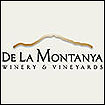
From
Naples to New York
Indeed, pizza remained a local delicacy until the concept crossed
the Atlantic, at the turn of the last century, in the memories
of immigrants from Naples, who settled in the cities along the
eastern seaboard of the United States, especially New York City.
The ingredients the immigrants found in their new country differed
from those in the old. In New York, there was no buffalo-milk
mozzarella, so cow’s-milk mozzarella was used. Oregano,
a staple southern Italian herb, was replaced in America by sweet
majoram, and the flavor of American tomatoes, flour, even water
was different. Here the pizza evolved into a large, wheel- like
pie, perhaps eighteen inches or more in diameter, reflecting
the abundance of the new country.
These first American pizzas may have been made at home, but
the baker’s brick oven, preferably fueled by wood, or
(forno al legno), best of all poplar, was and still is essential
to making a true pizza. Not to mention, for the best results,
the dough must always be hand-kneaded, allowed to “rest”
overnight in a wooden trough, and then flattened by hand, never
with a rolling-pin or by machine. Indeed, a recent Italian law
has spelled out six regola d’arte or rules for the making
of a “pizza DOC” or “pizza napolitana verace”—
in other words a genuine Neapolitan pizza: 1) the tomatoes must
be San Marzano, 2) the mozzarella buffalo-milk, 3) the oil must
be olive, 4) the salt natural not imitation, 5) the oven must
be domed, made of bricks and wood-burning at between 420-80
degrees, and 6) the dough must be kneaded by hand with no rolling
pins or blenders allowed. Would-be pizzaioli can enroll in Italy’s
two Accademie della pizza in Brescia near Milan or in Caorle,
half-way between Venice and Trieste, not in Naples, believe
it or not!
The first licensed pizzeria in New York was opened by Gennaro
Lombardi, a pizzaiolo from Naples, in 1895 on Spring Street,
but others quickly followed in the Italian communities around
the city. Still, pizza and pizzerias and, later, “pizza
parlors,” were little known outside the large cities of
the East until after World War II, when returning American G.I.s
brought back a taste for the pizzas they had had in Naples during
the Allies’ occupation along with the assumption that
pizza, like spaghetti and meatballs, was a typical Italian dish,
instead of a regional one.
National
Statistics
In fact, until about twenty years ago, it was next to impossible
to find pizza on the menu north of Rome. Today, however, according
to Burton Anderson, in his delightful Treasures of the Italian
Table (William Morrow, 1994), Italians eat more than 2.5 billion
pizzas a year, more than 45 per person, in over 38,000 pizzerie
for a profit of over 6.3 billion dollars. To accomplish this,
according to CIA—La Confederazione italiana agricoltori
(The Federation of Italian Farmers), every year Italy’s
pizzaioliconsume 7,500 tons of olive oil, 90,000 tons of mozzarella,
45,000 tons of tomatoes (San Marzano, Pachino, and Ciliegino),
135,000 tons of flour, and 300,000,000 basil leaves. As the
accompanying beverage 50% choose beer, 30% mineral water or
a soft drink and 20% wine, usually white and fizzy. “Every
year Italians eat more and more pizzas,” explained Duvilio
Nardi, secretary of NIP and, with his sister Fabiola owner of
the “Pizzeria del Corso” at Corso della Repubblica
in Forlì, tel. 011-39-0543-32674. “They used to
eat only the classics. As can be seen from the finalists’
and winners’ pizzas, now our clients have much more imagination
and choose their own ingredients. The toppings of our most popular
pizza, “Fabiola Uno” at “Pizzeria del Corso”
are tomato, pineapple, crustaceans, and mushrooms.”
In and Around Naples
Although the American promotion of pizza has resulted in its
becoming an international favorite, from Tuscaloosa to Tokyo,
nonetheless, Naples remains “the place” for a pizza.
The best pizzerias are 160-year-old Porta Alba, Via Port’Alba;
Pasquale Parziale’s O Caffone, Via Regina Margherita 76;
Bellini, Via Santa Maria di Costantinopoli 80, a favorite with
students; family-run Michele, Via Sersale 1/3, founded in 1870
by Michele Condurro and now run by his great-grandchildren,
which serves only pizza margherita and pizza marinara; Pizzeria
del Presidente, where Clinton stopped for a snack of margherita
piegata in quattro(“folded in four”), considered
by the proprietor, Ernesto Cacialli, to be the only real pizza;
and Trianon, Via Colletta 46, with marble-topped tables and
delicious “pizza lasagna”.
The owner of Brandi, Salita Sant’Anna di Palazzo 1 near
the San Carlo Opera House is a descendant of Raffaele Esposito,
the inventor of the margherita, and Antonio Pace, the owner
Da Ciro and president of La Vera Pizza DOC, Via Santa Brigida
71, claims one of his ancestors invented the “quattro
stagioni” or “four seasons” with its four
different toppings to please his family’s different palates.
For mouth-watering pizzas outside but near Naples, go to Umberto
Fornito’s Pizzeria Antica Frattese, Vicolo II Durante
2, in Fratta Maggiore; Gigino, Pizza al metro, Via Nicotera
10, in Vico Equense about 30 kilometers south on the breath-taking
Amalfi Coast, where pizza is served by the meter at long trestle
tables, or, on the terrace overlooking the Bay of Naples at
The Hotel Santa Caterinain Amalfi itself.
Elsewhere: Pizza al Metro’s new Roman branch called Gaudi,
Via Giovanelli 8/12; Pizza Nuovo Mondo, Via Amerigo Vespucci
9-17 also in Rome; Lombardi’s, owned by the namesake grandson
of the Big Apple’s first pizzaiolo, 32 Spring Street,
and Tiramisu, 1410 Third Avenue on the corner of 80th Street,
both in Manhattan; and Patsy’s Pizzeria, 19 Fulton Street,
under the Brooklyn Bridge in Brooklyn, which was recently awarded
first prize for the best pizza outside Naples by the Association
of Neapolitan pizzaioli.
Speaking
of Naples, honorable mention should go to Elba’s fourth-place
Vincenzo Vitondo of “La Pagliarella”, Via Panoramica,
Castellammare di Stabia, tel. -081-8026896, for his “La
Vera Napoli” or “Real Naples” with fresh San
Marzano tomatoes, buffalo mozzarella, and basil.
















